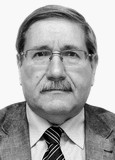Individual typological features of judokas of various weight categories
Ключевые слова:
anthropometry, somatotype, physical development, judo, athletes, weight categories.Аннотация
Objective of the study was to conduct a comparative analysis of morphometric indicators among judokas performing in various weight categories.
Methods and structure of the study. The survey involved 57 judokas performing in light (up to 60 kg, up to 66 kg), medium (up to 73 kg, up to 81 kg, up to 90 kg) and heavy (up to 100 kg, over 100 kg) weight categories, aged 17-23 years old with sports qualifications of at least I adult category. All athletes had the necessary anthropometric body measurements taken. The component composition of somatotype body weight was assessed using special methods. Statistical processing of experimental data was carried out using the statistical processing package STATGRAPHICS CENTURION.
Results and conclusions. Judokas competing in different weight categories differ in body type, relative content of bone and fat mass. Therefore, a differentiated approach to the content of the training process of judokas of various weight categories should be based not only on the traditionally taken into account body weight, but also focus on individual typological features of morphology, which determines preferences in the process of studying wrestling techniques and, ultimately, affects the formation of individual competitive technical arsenal of judokas.
Библиографические ссылки
Afanasyeva I.A. Geneticheskiye osobennosti treniruyemosti taekvondistov i ikh sportivnyy otbor. St. Petersburg state Academy of Physics culture named after P.F. Lesgaft. St. Petersburg: [n.p.], 2004. 96 p.
Bakulev S.E., Taymazov V.A. Genealogicheskiye osnovy prognozirovaniya uspeshnosti sorevnovatelnoy deyatelnosti yedinobortsev. Uchenyye zapiski universiteta im. P.F. Lesgafta. 2006. Issue. 19. pp. 7-15.
Martirosov E.G. Somaticheskiy status i sportivnaya spetsializatsiya. Doct. diss. abstract (Biol.). Moscow, 1998. 87 p.
Rudenko G.V., Tkachuk M.G., Dorofeev V.A. Morfologicheskiye pokazateli uspeshnosti sorevnovatelnoy deyatelnosti v yedinoborstvakh. Teoriya i praktika fizicheskoy kultury. 2020. No. 4. pp. 92-94.
Sobolev A.A., Tkachuk M.G., Levitsky A.A. Morfofunktsionalnyye kriterii bystroy treniruyemosti sambistov. Uchenyye zapiski universiteta im. P.F. Lesgafta. 2018. No. 7. pp. 247-250.
Tkachuk M.G., Sobolev A.A., Levitsky A.A. Sportivnyy otbor v sambo s uchetom morfofunktsionalnykh pokazateley i individualnoy treniruyemosti. Uchenye zapiski universiteta im. P.F. Lesgafta. 2016. No. 3. pp. 236-239.
Tkachuk M.G., Oleynik E.A., Dyusenova A.A. Sportivnaya morfologiya. Textbook. St. Petersburg: Lan publ., 2023. 226 p.
Shimchenko M.V. Zavisimost priyemov dzyudo ot antropometricheskikh osobennostey sportsmenov. Uspekhi sovremennogo yestestvoznaniya. 2010. No. 9. pp. 180-182.

Дополнительные файлы
Опубликован
Как цитировать
Выпуск
Раздел
Лицензия

Это произведение доступно по лицензии Creative Commons «Attribution» («Атрибуция») 4.0 Всемирная.
